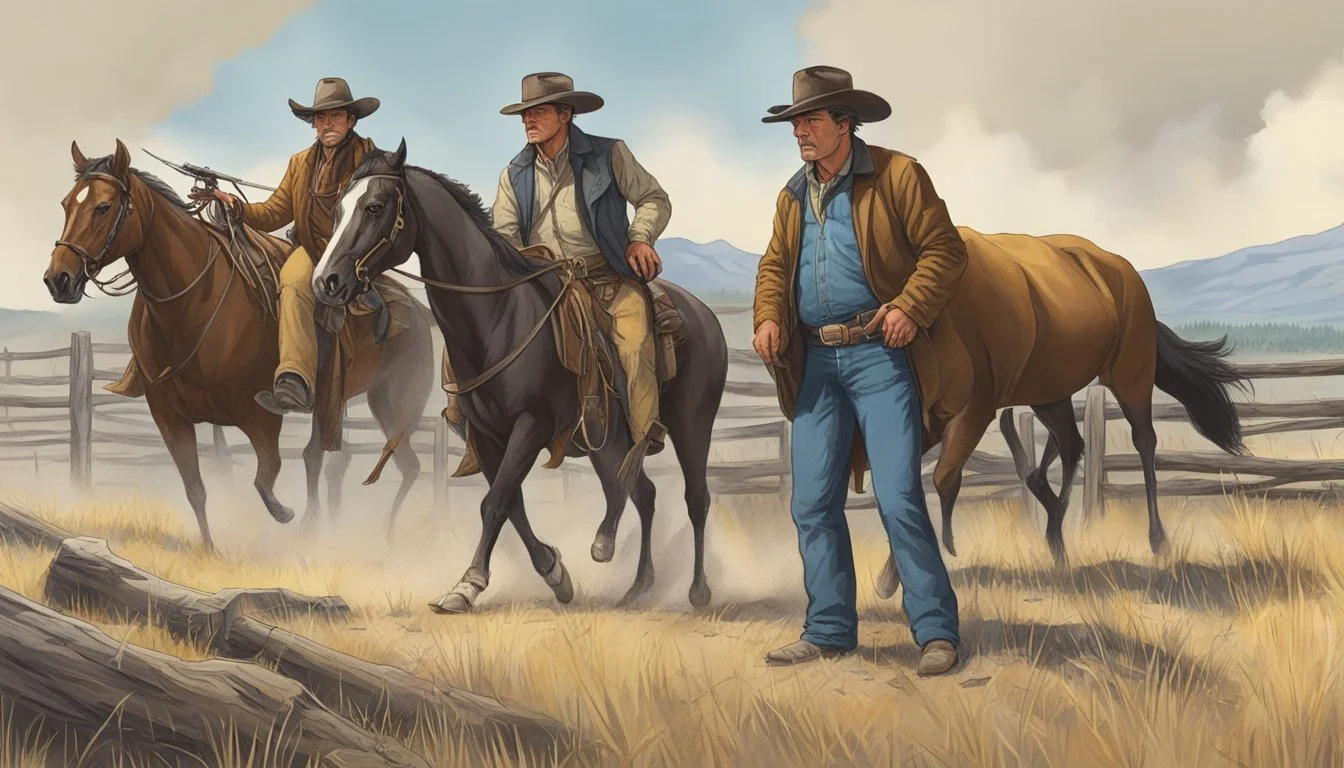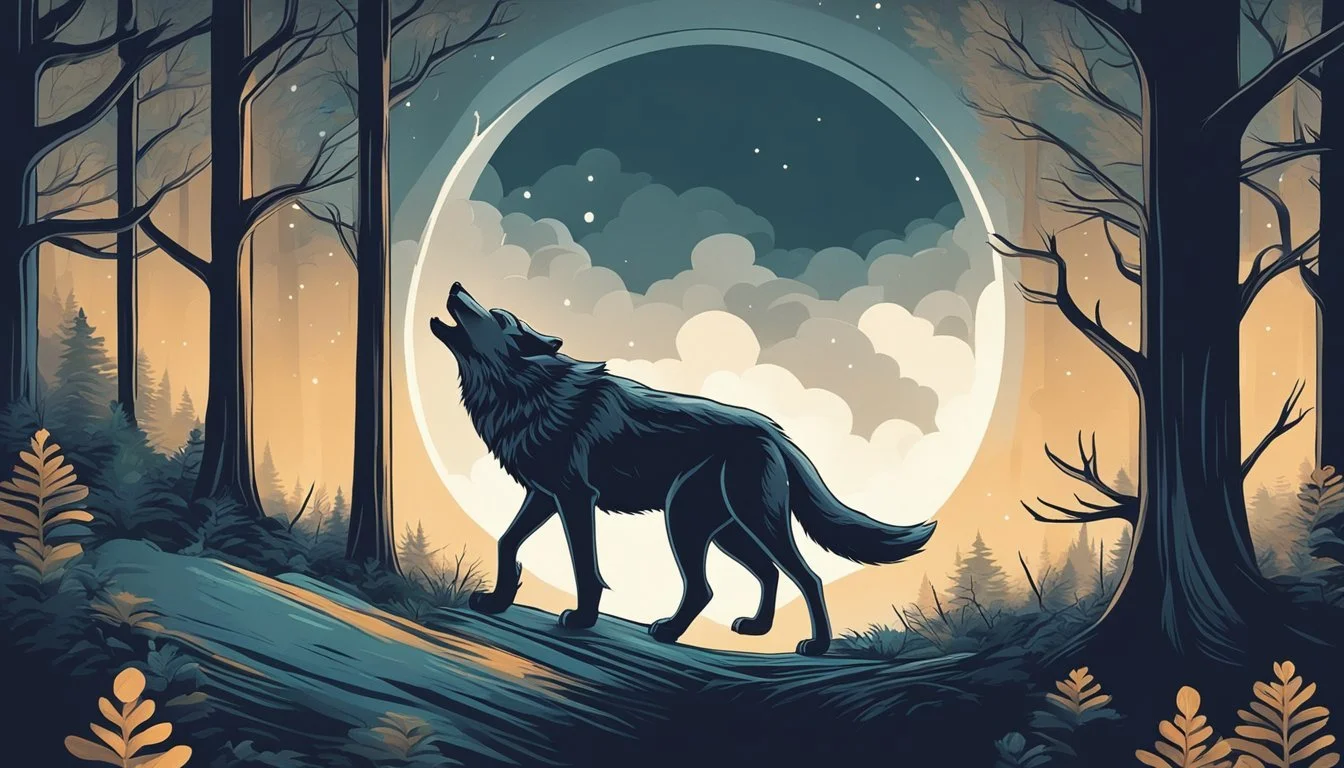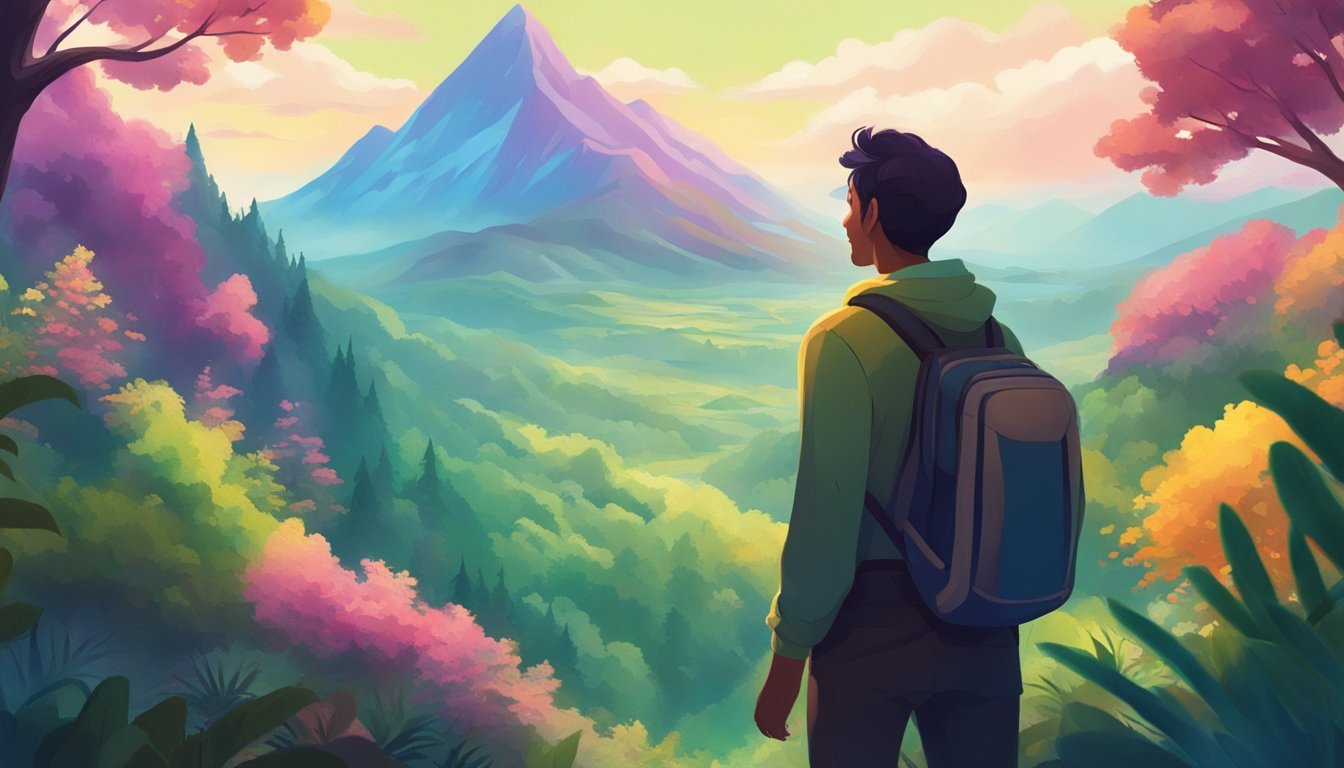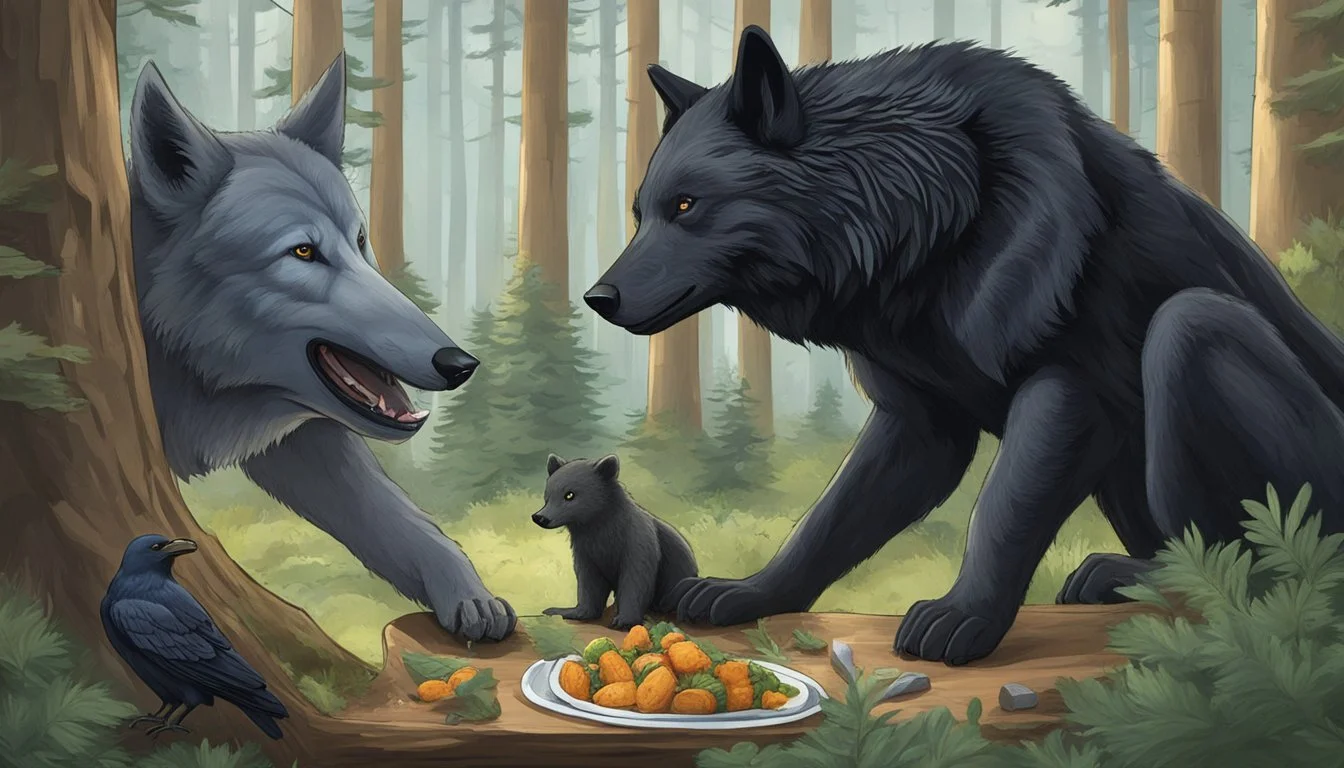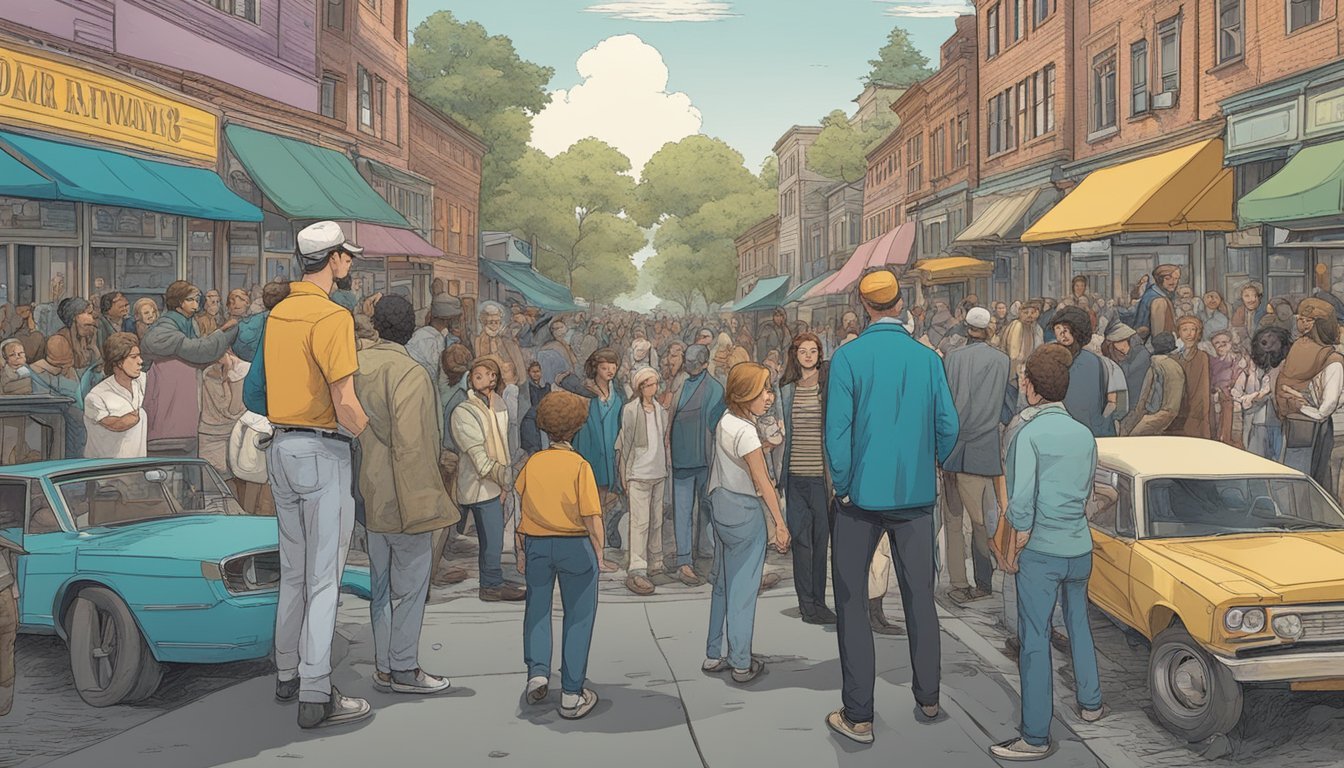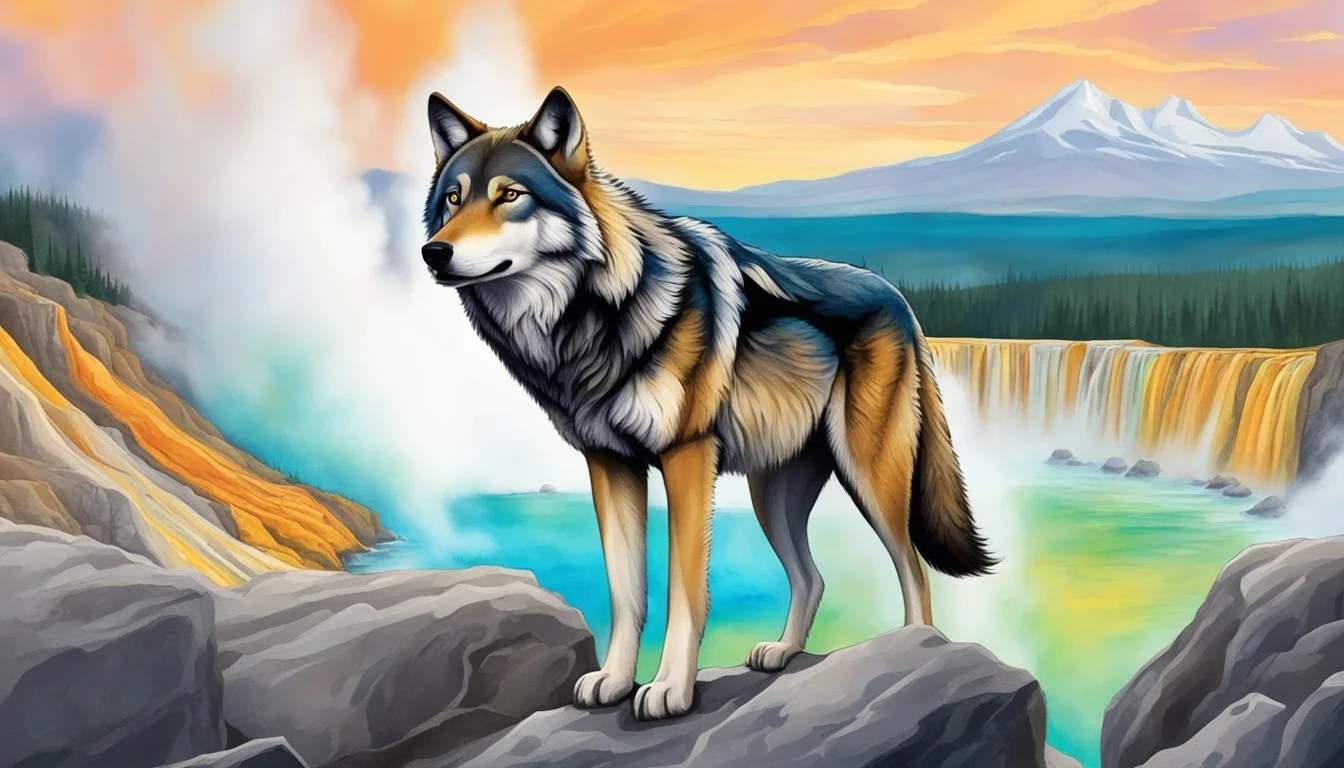Character Backstories: The Impact of Yellowstone's Flashbacks
Unraveling the Dutton Legacy
Yellowstone's fifth season has sparked intense discussion among fans, particularly regarding the show's use of flashbacks. These glimpses into the past have become a prominent feature, offering deeper insights into the Dutton family's history and the origins of their ranch empire.
The flashbacks in Yellowstone season 5 serve multiple purposes, from character development to plot advancement. They provide context for the present-day struggles of the Dutton family, illuminating the motivations and experiences that have shaped key characters. By juxtaposing past and present, the show creates a rich tapestry of generational conflict and legacy.
While some viewers have expressed frustration with the frequency of these retrospective scenes, others appreciate the added depth they bring to the narrative. The flashbacks featuring a young John Dutton, portrayed by Josh Lucas, have been especially noteworthy, offering a window into the formative years of the Dutton patriarch and the early challenges faced by the family in establishing their ranching dynasty.
The Significance of Flashbacks in Yellowstone
Flashbacks serve as a narrative tool in Yellowstone, providing crucial insights into the Dutton family's past and shaping the present-day storylines. These glimpses into history illuminate character motivations and add depth to the ongoing conflicts.
Unraveling the Dutton Family History
Flashbacks in Yellowstone reveal the roots of the Dutton dynasty. They showcase pivotal moments that shaped the family's values and their connection to the land. Viewers witness young John Dutton's experiences, Beth's tumultuous childhood, and Rip's integration into the family.
These scenes explain longstanding tensions and alliances. They highlight the sacrifices made to preserve the ranch and the weight of legacy on each generation. Flashbacks also expose hidden traumas, like Beth's complicated relationship with her mother and Jamie's adoption.
The Role of Flashbacks in Plot Development
Yellowstone's flashbacks are not mere nostalgia; they actively drive the plot forward. They provide context for current decisions and reveal the origins of ongoing feuds. For example, scenes from the past shed light on John Dutton's unyielding stance on land preservation.
These historical interludes often foreshadow upcoming conflicts or explain character behaviors. They create emotional resonance by connecting past events to present challenges. Flashbacks also serve to introduce new plot elements, gradually unveiling secrets that impact current storylines.
By interweaving past and present, the show creates a rich tapestry of interconnected events. This narrative technique keeps viewers engaged, offering both answers and new questions with each revealed memory.
Character Analysis Through Backstorie
Yellowstone's character backstories provide crucial insights into the motivations and actions of key figures. These glimpses into the past shape our understanding of the complex relationships and conflicts that drive the series.
John Dutton's Complex Past
John Dutton's backstory reveals a man shaped by loss and duty. As the patriarch of the Dutton family, his past experiences inform his fierce determination to protect the ranch. Flashbacks show John's relationship with his father and the lessons he learned about leadership and sacrifice. These moments explain his sometimes harsh decisions and unwavering commitment to preserving his family's legacy.
Kevin Costner's portrayal brings depth to John's character, showcasing the weight of responsibility he carries. The loss of his wife and the challenges of raising his children alone have hardened him, yet glimpses of vulnerability emerge in rare moments of reflection.
Beth Dutton's Emotional Journey
Beth's backstory is marked by tragedy and trauma. Flashbacks reveal her complicated relationship with her mother and the devastating incident that shaped her fierce, often abrasive personality. These moments provide context for Beth's sharp wit, emotional walls, and deep-seated anger.
Her journey is intertwined with Rip's, and their shared history adds layers to their complex adult relationship. Beth's past experiences explain her loyalty to her father and her conflicted feelings towards her brothers, particularly Jamie.
The backstory illuminates Beth's drive for success and her ruthless business tactics, rooted in a desire to prove herself and protect the family legacy.
Rip's Loyalty and Relationship with the Duttons
Rip Wheeler's backstory is one of redemption and found family. Flashbacks show his troubled youth and how John Dutton took him in, giving him purpose and a place to belong. These moments explain Rip's unwavering loyalty to the Duttons, especially to John and Beth.
His history with Beth, from their teenage years to their adult relationship, is revealed through carefully placed flashbacks. These glimpses into the past provide context for their intense connection and the obstacles they've overcome.
Rip's backstory also sheds light on his role as the ranch's enforcer, illustrating how his experiences shaped his moral code and dedication to protecting the Dutton family at all costs.
Jamie's Struggle with Identity and Power
Jamie Dutton's backstory is marked by a search for belonging and approval. Flashbacks reveal his efforts to earn his father's respect and the complex dynamics within the Dutton family. These moments provide insight into Jamie's insecurities and his drive for success in the legal and political arenas.
The revelation of Jamie's adoption adds another layer to his character, explaining his feelings of alienation and his conflicted loyalty to the Dutton name. His backstory illuminates the roots of his ambition and his complicated relationships with his siblings, particularly his rivalry with Beth.
Jamie's past experiences contextualize his actions and decisions, often driven by a desire for recognition and a place within the family power structure.
Impact of Backstories on Audience Perception
Character backstories in Yellowstone shape how viewers connect with and interpret the show's complex personalities. Flashbacks provide crucial context that influences audience sympathy and judgment.
Sympathy vs. Judgment: How Flashbacks Influence Viewers
Flashback sequences in Yellowstone offer glimpses into characters' pasts, affecting how audiences perceive their present actions. When viewers see John Dutton's (Kevin Costner) early struggles, it contextualizes his fierce protection of the ranch.
Beth Dutton's (Kelly Reilly) traumatic flashbacks explain her sharp edges, fostering empathy. These glimpses into formative moments allow viewers to understand characters' motivations, even when their actions are morally questionable.
Flashbacks can also challenge initial judgments. Revealing Jamie Dutton's (Wes Bentley) adoption through backstory adds layers to his conflicted loyalties.
The Narrative Technique's Effect on Character Relatability
Yellowstone's use of backstories enhances character relatability by revealing vulnerabilities and past experiences. Flashbacks to Kevin Costner's character as a young rancher showcase the roots of his determination.
Kelly Reilly's portrayal of Beth gains depth through scenes of her mother's influence. These moments make her character more human and relatable despite her often abrasive exterior.
Wes Bentley's Jamie becomes more sympathetic when viewers see his struggle for acceptance. By weaving past and present, Yellowstone creates multidimensional characters that resonate with audiences on a deeper level.
Cinematography and Direction of Flashbacks
Yellowstone's flashback sequences employ distinctive visual techniques and directorial choices to transport viewers between past and present. These stylistic elements help differentiate time periods while revealing crucial character backstories.
Taylor Sheridan's Vision for Yellowstone
Taylor Sheridan, Yellowstone's creator, uses flashbacks as a storytelling device to add depth to the Dutton family saga. He employs warm, golden-hued cinematography for scenes set in the past, evoking a sense of nostalgia. Sheridan often frames young John Dutton in wide shots that showcase the vastness of the Montana landscape, emphasizing the ranch's importance to the family legacy.
The director carefully selects pivotal moments from the Duttons' history to illuminate present-day conflicts. By juxtaposing past and present, Sheridan creates visual echoes that highlight how characters have changed - or remained the same - over time.
Christina Voros's Contribution to Flashback Episodes
Christina Voros, a frequent director on Yellowstone, brings a unique perspective to the show's flashback sequences. She utilizes subtle camera movements and intimate framing to capture the emotional nuances of young characters, particularly in scenes featuring Josh Lucas as young John Dutton.
Voros often employs match cuts to transition seamlessly between time periods, visually linking past actions to present consequences. Her direction emphasizes character expressions and body language, allowing viewers to draw connections between younger and older versions of the Duttons.
In flashback episodes, Voros collaborates closely with the cinematography team to maintain visual continuity while distinguishing different eras through lighting and color grading techniques.
The Cultural and Geographical Setting of Yellowstone
The rugged Montana landscape and Texan influences shape the world of Yellowstone, creating a unique blend of Western cultures and traditions.
The Significance of Montana's Landscape
Montana's vast, untamed wilderness serves as a stunning backdrop for the Yellowstone series. The show's creators utilize the state's diverse terrain to enhance storytelling and character development.
Rolling prairies, snow-capped mountains, and pristine rivers create a visually captivating environment. This landscape becomes a character in itself, influencing the lives and decisions of the Dutton family and other ranch inhabitants.
The harsh climate and remote location of the Dutton Ranch reflect the challenges faced by modern ranchers. These elements add authenticity to the struggles portrayed on screen, from land disputes to wildlife conservation efforts.
The Texan Influence on the Dutton Ranch
Despite its Montana setting, the Dutton Ranch bears a strong Texan influence. This unique blend of cultures adds depth to the show's portrayal of modern Western life.
John Dutton's Texas roots are evident in the ranch's operations and management style. The use of traditional cattle-driving techniques and the emphasis on horsemanship showcase this Texan heritage.
The ranch's branding practices and livestock handling methods draw from both Montana and Texas ranching traditions. This fusion creates a distinct identity for the Dutton Ranch, setting it apart from neighboring properties.
Texan influences extend to the characters' speech patterns and values, adding authenticity to their portrayals. This cultural mix contributes to the complex dynamics between the Duttons and other Montana ranchers.
Exploring Yellowstone's Key Relationships
Yellowstone's intricate web of relationships forms the heart of the series. These connections drive the plot forward and reveal the characters' deepest motivations and vulnerabilities.
Rip and Beth's Turbulent Love Story
Beth Dutton and Rip Wheeler's relationship is a cornerstone of Yellowstone. Their bond, forged in childhood trauma, has evolved into a fierce and passionate love. Beth's sharp wit and Rip's unwavering loyalty create a dynamic that captivates viewers.
Their journey is marked by moments of intense devotion and heart-wrenching setbacks. Rip's steadfast support of Beth through her darkest times showcases the depth of their connection. Their wedding, a simple yet poignant affair, highlighted the couple's growth and commitment.
Despite their strong love, Beth and Rip face constant challenges. Their struggle to build a family and navigate the dangerous world of the Yellowstone ranch tests their resilience. Their relationship remains a focal point of the series, offering both tender moments and explosive conflicts.
Kayce and Monica's Intertwined Fates
Kayce Dutton and Monica Long's relationship represents the clash between two worlds. Their marriage bridges the gap between the Dutton ranch and the nearby Native American reservation. This union faces constant strain from external pressures and cultural differences.
Kayce's loyalty to his family often conflicts with his commitment to Monica and their son. Monica's dedication to her heritage and community creates tension with the Dutton way of life. Their love is tested by tragedy, including the loss of their second child.
Despite these challenges, Kayce and Monica's bond remains strong. Their shared commitment to their son Tate and their efforts to find common ground keep them together. Their relationship serves as a metaphor for the larger conflicts within the Yellowstone universe.
Tate: The Next Generation of Duttons
Tate Dutton, the son of Kayce and Monica, represents the future of the Dutton legacy. As the youngest member of the family, Tate embodies the hopes and fears of both his parents and grandparents. His mixed heritage places him at the center of the show's cultural conflicts.
Tate's experiences, including his kidnapping and subsequent trauma, highlight the dangers that come with being a Dutton. His relationship with his grandfather John is particularly significant, as John sees Tate as the key to preserving the family's legacy.
As Tate grows, his role in the family dynamic becomes more complex. He must navigate the expectations of both sides of his family while finding his own path. Tate's journey of self-discovery and his place within the Dutton empire promises to be a crucial element in the series' ongoing narrative.
Analyzing Key Moments from Yellowstone Season 5
Season 5 of Yellowstone brought significant plot developments and character revelations through strategic use of flashbacks. These glimpses into the past shed new light on the Dutton family's history and motivations.
Season 5 Developments and Flashback Integration
The latest season of Yellowstone incorporated flashbacks to provide crucial context for current events. These scenes offered insights into the characters' formative experiences and relationships.
John Dutton's absence loomed large over the season, with his fate becoming a central mystery. The show addressed this by revealing John's alleged suicide, a shocking turn that reshaped the family dynamics.
Flashbacks played a key role in exploring the Duttons' past, helping viewers understand the roots of present-day conflicts. These scenes illuminated long-standing family tensions and the origins of their fierce dedication to the ranch.
Episode 11: A Closer Look at 'Three Fifty-Three'
Episode 11, titled "Three Fifty-Three," proved to be a pivotal moment in Season 5. It finally revealed the purpose behind the flashbacks that dominated the second half of the season.
Beth's premonition of John's death coincided with a fatal shot, connecting past and present in a dramatic fashion. This moment underscored the deep bonds within the Dutton family and the weight of their legacy.
The episode delved into themes of loyalty, betrayal, and the complexities of family relationships. It explored how past decisions continued to impact the characters' present-day actions and motivations.
"Three Fifty-Three" marked a turning point in the narrative, setting the stage for the series' conclusion. It tied together various plot threads and character arcs, promising an intense finale for the beloved show.
Controversies and Critical Reception of Flashbacks
Yellowstone's use of flashbacks has sparked debate among viewers and critics. Some praise the technique for adding depth, while others feel it disrupts the narrative flow.
Divisive Opinions on Flashback Usage
Flashbacks in Yellowstone have divided audiences. Supporters argue they provide crucial context for character motivations and relationships. Critics contend the frequent jumps to the past can be jarring and confusing.
The show's creators defend flashbacks as essential for world-building. They claim these scenes reveal important details about the Dutton family history and ranch dynamics.
Some viewers find the flashbacks compelling and emotionally resonant. Others feel they slow the pacing and detract from present-day storylines.
TV critics have noted both positive and negative aspects. While many appreciate the added layers, some argue the flashbacks are overused or poorly integrated.
Plot Holes and Mystery Elements in the Show
Yellowstone's flashbacks have introduced mystery elements, but also potential plot holes. Inconsistencies between past and present timelines have been pointed out by attentive viewers.
Some plot developments revealed through flashbacks have been criticized as convenient or contrived. Critics argue certain revelations feel forced to explain current events.
The show's writers maintain that apparent discrepancies will be resolved as more of the past is unveiled. They emphasize the importance of preserving some mystery to keep audiences engaged.
Debates continue over whether flashbacks enhance or undermine the show's narrative coherence. Fans dissect each new reveal, searching for clues and potential contradictions.
Future of the Dutton Family Saga
The Dutton family's journey continues to captivate audiences, with the final season of Yellowstone promising intense developments. Speculation swirls around John Dutton's fate, while fans eagerly anticipate the series' conclusion. The potential for spin-offs keeps the Yellowstone universe alive.
Speculations on John Dutton's Fate
John Dutton's future remains uncertain as Yellowstone approaches its finale. His health issues and numerous enemies pose significant threats. Some theories suggest John might sacrifice himself to protect the ranch, while others believe he'll secure the Dutton legacy before retiring. The possibility of John's death looms large, potentially serving as a dramatic catalyst for the series' conclusion.
Key factors influencing John's fate:
Ongoing land disputes
Family conflicts
Political pressures
Fans' Expectations for the Last Season
Viewers anticipate a gripping final season that ties up loose ends and delivers satisfying character arcs. Many hope for resolutions to long-standing conflicts and clarity on the ranch's future. Expectations include:
Intense showdowns with corporate and tribal adversaries
Revelations about Beth and Jamie's complex relationship
Rip's role in safeguarding the Dutton legacy
Fans also look forward to seeing how the modern Duttons' story connects to their ancestors' journeys depicted in the prequels.
Possible Spin-offs and Yellowstone's Legacy
Yellowstone's success has paved the way for an expanded universe. Spin-off possibilities include:
A series focusing on the next generation of Duttons
Exploration of other ranching families in the region
Deeper dives into supporting characters' backstories
The show's legacy extends beyond television, influencing fashion, tourism, and renewed interest in modern ranching culture. Yellowstone's impact on pop culture ensures its place in TV history, regardless of how the main series concludes.
Concluding Thoughts on Yellowstone's Storytelling
Yellowstone's use of flashbacks has become a defining element of its narrative structure. These glimpses into the past provide crucial context for character motivations and relationships.
Kevin Costner's portrayal of John Dutton anchors the series, with flashbacks illuminating his character's journey. The show's creator, Taylor Sheridan, skillfully weaves past and present to create a rich tapestry of story.
Cast members like Kelly Reilly and Cole Hauser have noted the importance of flashbacks in shaping their performances. These scenes allow actors to explore different facets of their characters across time periods.
Yellowstone's storytelling techniques have resonated with audiences, contributing to its status as a top-rated television drama. The show's blend of contemporary issues and historical context sets it apart in the modern Western genre.
While some viewers have expressed frustration with the pacing of flashback sequences, many appreciate the depth they add to the narrative. These scenes often reveal key moments that continue to influence the characters' present-day actions.
As Yellowstone approaches its conclusion, the strategic use of flashbacks may play a crucial role in tying up loose ends and providing satisfying resolutions to long-running storylines.

